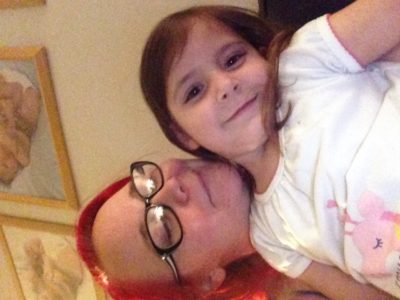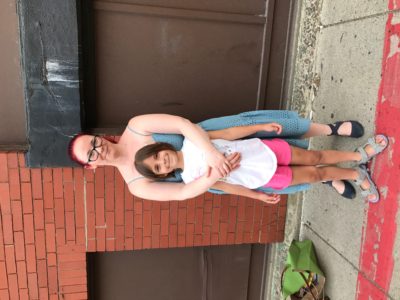The MastAttack 107: The Layperson’s Guide to Understanding Mast Cell Diseases, Part 84
97. What is the progression of therapies to treat mast cell disease? What are the next steps if I’m not improving?
There are some general rules of thumb when adding new medications to a regimen in a mast cell patient.
• Medication changes should be done one at a time. The reason for this is simple: if you get better, or worse, it will be harder to figure out which medication is the cause. Recommendations on how far apart to space changes vary, but most recommend 3-7 days.
• Medications often contain dyes and inactive ingredients like lactose and alcohol that can cause reactions. Many patients take compounded medications to avoid these triggers. Bear in mind that compounding medications can be very expensive and many insurances will not cover it. You should also know that not all medications are able to be compounded.
• In some instances, the likely benefit of a problem medication is enough that it is worth it to try and force tolerance. This should never be done without the supervision of a provider. Premedicating before taking a dose of the medication can help curb mast cell symptoms. Personally, I will premedicate before taking a new medication for three days. If I take it on the fourth day, when I’m not premedicated, and I react, I know that I’m unlikely to ever tolerate that med. There are also desensitization protocols that involve use of IV antihistamines, steroids, and sometimes, epinephrine.
• It is my experience that often many medications that would not typically warrant a taper down before stopping must be stopped gradually in mast cell patients to prevent reactions. For example, the general population does not need to wean off IV antihistamines. They can just stop taking it without a taper. But if a mast cell patient needed six doses of IV Benadryl, and they stop the medication cold turkey the following day, they usually react. Mast cell patients should change things slowly.
• Some medications can take a while to achieve a beneficial effect. It is usually in the patient’s best interest to continue a med for long enough that they can feel confident in their assessment that a medication is or is not helping.
The following describes medication progression for overall management of mast cell disease. Please note that there are other medications that can be added for specific symptoms that are not described here. Please also note that this list is just a general guideline I find helpful.
1. Start baseline meds.
- Start second generation H1 antihistamine, like cetirizine. Starting dose is usually one tablet 1-2 times a day.
- Start H2 antihistamine, like famotidine. Starting dose is usually one tablet 1-2 times a day.
- Start mast cell stabilizer, usually cromolyn. In adults, target dose is typically 200 mg four times a day. First generation H1 antihistamines, like diphenhydramine (Benadryl) are not typically used as baseline medication because they may have significant side effects, cause rebound reactions, or lose effectiveness as a rescue medication.
- Many patients benefit from gradual dose increase in cromolyn. For reasons that are not clear, patients sometimes react to cromolyn before achieving some benefit. It can take up to four months for cromolyn to achieve full efficacy.
2. Start leukotriene blocker. Starting dose is usually one tablet at bedtime.
3. Start COX inhibitor, like aspirin. Starting dose is usually one baby aspirin (81 mg) daily. COX inhibitors interfere with production of prostaglandins.
4. Increase dose of H1 antihistamine started in step 1.
5. Increase dose of H2 antihistamine started in step 1.
6. Add another second generation H1 antihistamine to be taken along side the H1 antihistamine started in step 1. Loratadine and cetirizine are a common pair.
7. Add additional H1 antihistamine, like doxepin or cyproheptadine.
8. Start ketotifen. Starting dose is usually 1 mg twice a day. Ketotifen is both an H1 antihistamine and mast cell stabilizer. In the US, oral ketotifen must be obtained through a compounding pharmacy or imported from abroad via an FDA guidelines.
9. Increase dose of leukotriene blocker started in step 2.
10. Add first generation H1 antihistamine, hydroxyxine.
11. Start lipoxygenase inhibitor, like zileuton. Lipoxygenase inhibitors interfere with production of leukotrienes.
12. Increase dose of COX inhibitor started in step 3.
13. Increase dose of ketotifen started in step 8.
14. Take a short burst of corticosteroids, like prednisone. Corticosteroids suppress production of inflammatory mediators by mast cells.
15. Take a daily low dose of corticosteroids after a short burst at higher dose in step 14. Corticosteroids suppress production of inflammatory mediators by mast cells.
16. Start a benzodiazepine, like lorazepam.
17. Start Xolair, an anti-IgE biologic. It is unclear why Xolair helps mast cell disease when mast cell reactions typically occur without IgE involvement in this population.
18. Start regular infusion of IV fluids. This can help a lot with third spacing, fluids becoming trapped in places they aren’t supposed to, leading to swelling and functional dehydration.
19. Add therapies to block other inflammatory mast cell mediators, like interleukins or TNF. Enbrel is sometimes used in this capacity.
20. Add regular doses of IV push medications like diphenhydramine and famotidine.
21. Add continuous infusion of diphenhydramine (Benadryl) through IV line.
22. Start a tyrosine kinase inhibitor. Patients should receive regular bloodwork to monitor for organ damage or low blood cell counts.
23. Start untargeted chemo like interferon, cladribine, or hydroxyurea. Patients should receive regular bloodwork to monitor for organ damage or low blood cell counts.
24. Receive HSCT (bone marrow transplant). This option is ONLY available to patients who have malignant forms of mastocytosis and who have failed every other treatment option.
There are also a number of other changes that may help mast cell patients.
• Remove obvious triggers.
• Consider removing or limiting some foods. This is tricky because there are at least four different lists of low histamine foods and they all conflict. Removing lots of foods at once makes it much likelier than you will lose tolerance to them. I went strictly low histamine in 2014 and it was literally years before I could tolerate even small amounts of most of the foods I removed.
• Adapt medication schedule so that triggering activities occur when medications are most available to your body. This includes things like taking antihistamines before eating or exercising.
• Supplement things that many mast cell patients are deficient in. This includes vitamin D and magnesium.
• Start quercetin.
• If possible, low impact exercise can be helpful.
• Manage your pain aggressively. Pain is a huge mast cell trigger.
• If you have a lot of environmental triggers, wearing a mast like a Vogmask is a good option.
• For patients who have severe GI involvement, bowel rest sometimes helps. Patients on bowel rest stop taking any food or drink by mouth and receive IV nutrition (TPN).
• Avoid overtly stressful situations at all costs. I cannot emphasize this enough. Do not engage in upsetting situations if at all possible.
Sent from my iPad

